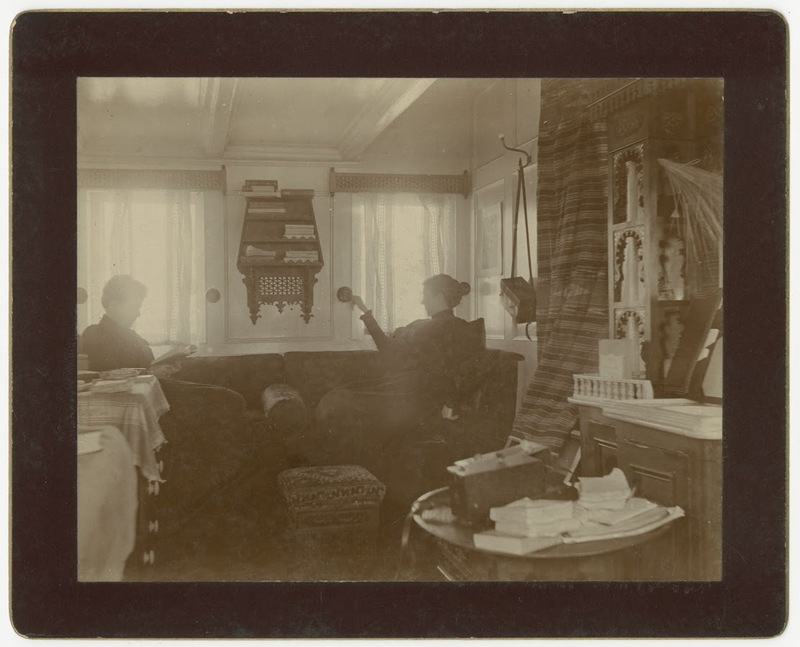Early Kodak cameras
As wealthy Rochesterians, it is not surprising that the Watsons were early adopters of Kodak cameras; indeed, James Sibley Watson was on Eastman Kodak’s board by the early 1890s, and remained on the board until the end of his life. Some of the images from Camping in Morocco and A Trip Along the Nile were taken with the Kodak No. 2 camera (shown on the table in the picture at left), introduced in 1889. The camera produced characteristic round images and could take 60-100 exposures on a roll. When a roll of film was completed the entire camera was sent to Kodak for development and refilling. Additional photos were probably taken on a Kodak #3 camera, also introduced in 1889, which produced rectangular prints. This photograph from an inner cabin on the Sesostris shows cameras used by the Watson-Perkins party during their Trip Along the Nile.
The introduction of these easy to use Kodak cameras transformed travel photography, no longer the sole purview of professionals, who shot and developed their own prints. The new cameras made amateur photography easy. Kodak’s advertising slogan “You Press the Button, We Do the Rest” aptly described the separation of shooting and developing pictures that was to be the key to Kodak’s success. Tourists could document their trips with spur of the moment snapshots, telling stories of their experiences rather than just purchasing commercial views of places they may have visited. “Kodak” became a verb, and we see its use in the Camping in Morocco talk when Emily Sibley Watson says that “the entire caravan was kodaked.”
The photos from these trips are full of scenes of everyday life: street scenes, images of people along the banks of the Nile, views of bazaars, etc. Such scenes documented the trip in a way that words could not express. Emily writes of her first views of Tetouan, “Never have I dreamed of anything so interesting and strange, it was like living in an Arabian nights’ tale. Our Kodaks will describe it much better than I can, I shall not even try to.” The “picturesque” scenes sought out by the tourist were culturally conditioned by widely circulated commercial images as well as by the mechanics of an already well-developed tourist industry. In her classic book, On Photography, Susan Sontag describes the experience of the tourist photographer as one of “converting experience into an image, a souvenir.”[i]

